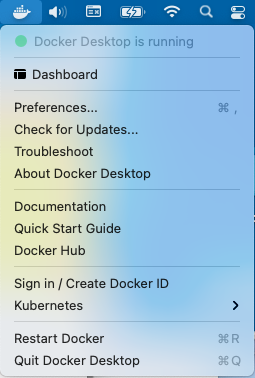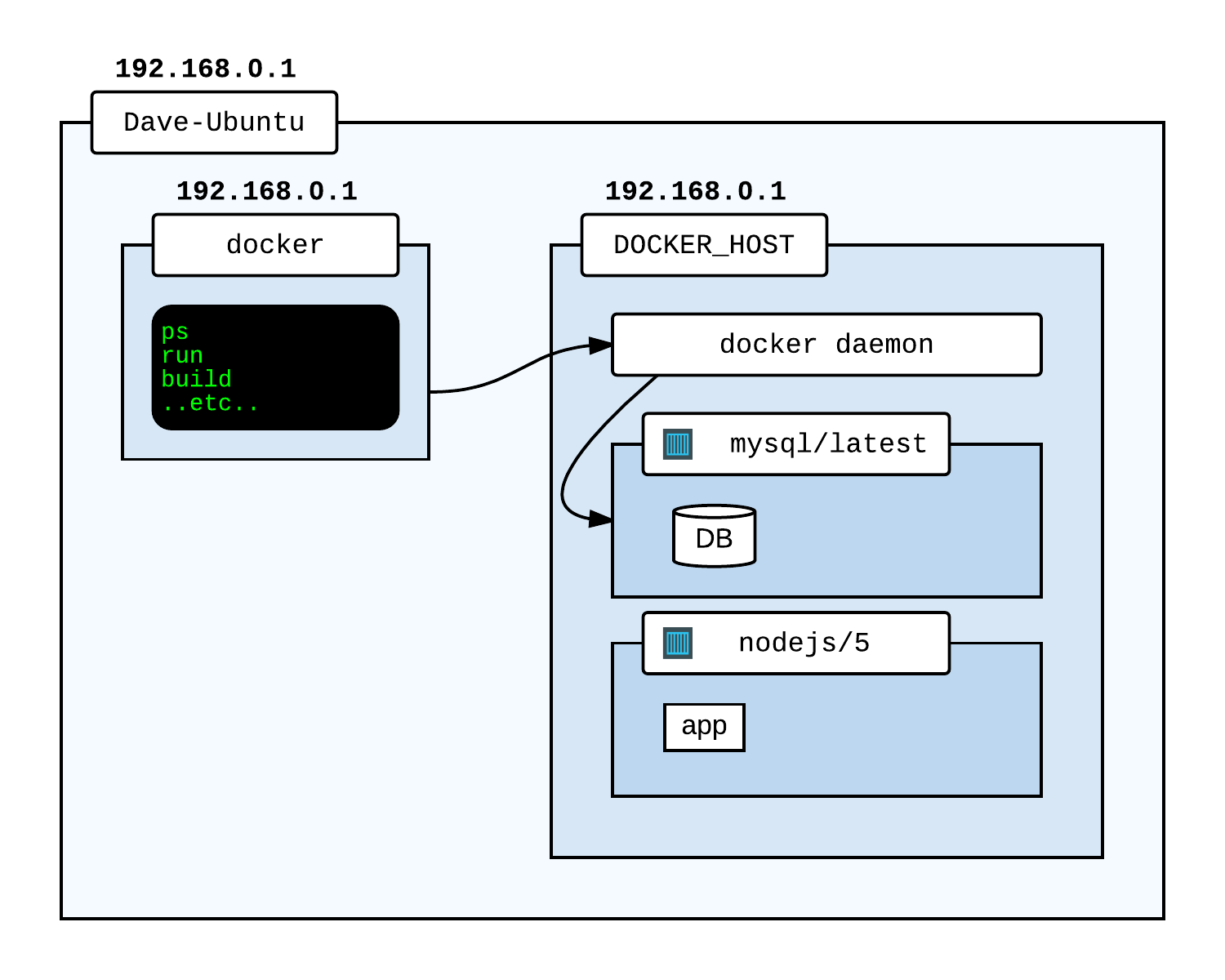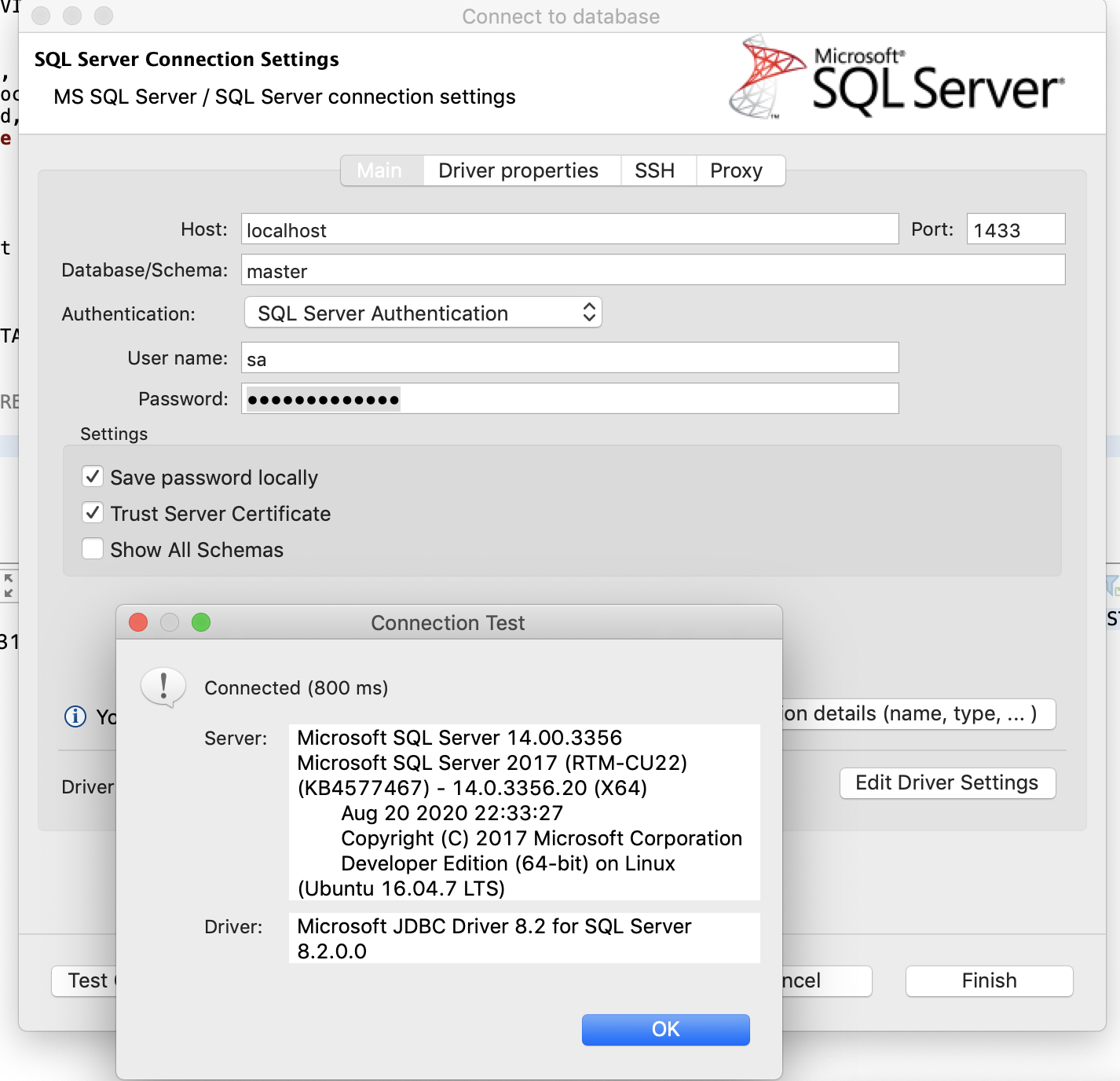Set up a quick environment for tests and also to take our Liquibase University certification courses.
- Connect PostgreSQL Database with DBeaverPostgreSQL with DBeaver.
- We used DBeaver. See the connection configuration below. The password will be what you specified in the `-e ‘SAPASSWORD=yourStrongPassword1$` on docker image start in the previous section.
Sometimes, it’s handy to be able to set up a quick environment for tests and also to take our Liquibase University certification courses. Here’s how to use Docker to create an MSSQL container.

Docker Hub is the world’s largest repository of container images with an array of content sources including container community developers, open source projects and independent software vendors (ISV) building and distributing their code in containers. Users get access to free public repositories for storing and sharing images or can choose. The Docker Weekly is a email newsletter with the latest content on Docker and the event agenda for the upcoming weeks. Meet the Captains. Select members of the community that are both experts in their field and are passionate about sharing their Docker knowledge with others. Educational resources.
1. Install the version of Liquibase you’d like to use.
Dbeaver Docker Oracle
2. Run MSSQL via Docker.
Use these instructions from Docker Hub. The instructions are not version specific.
- Run: `docker run -e ‘ACCEPT_EULA=Y’ -e ‘SA_PASSWORD=yourStrongPassword1$’ -p 1433:1433 -d mcr.microsoft.com/mssql/server:2017-CU8-ubuntu`
- Note, this will run with the tag `2017-CU8-ubuntu`
3. Connect the database.

You can use SQLPlus or a SQL Browser. We used DBeaver. Latex in jupyter notebook python. See the connection configuration below. The password will be what you specified in the `-e ‘SA_PASSWORD=yourStrongPassword1$` on docker image start in the previous section. From the above example it would be: `yourStrongPassword1$`
4. Prepare SQLServer with database/schemas/objects.

Now that we have a Docker container that is running MS SQLSERVER, we want to have a database with schemas to run Liquibase against. Or you can continue by using the default master db ; dbo schema.
5. Configure the Liquibase project.


You can use any Liquibase project you want. I use one I have committed to source:
- Make sure you are in the root of project folder (in this case, ronak_lb_projects)
- cd ronak_lb_projects/mssql
- verify liquibase.properties file has URL and passwords correct, mine looked like this:
You can test your configuration by running the liquibase updateSQL command.
`liquibase –username=SA –password=’yourStrongPassword1$’ updateSQL`
Destroy the Docker image
Find your container by listing it:
Dbeaver Docker Mysql
This command will return something like the following:
Use the container ID to delete the image.
Get started with Liquibase today!
Docker Dbeaver
It’s easy to get up and running in minutes.
